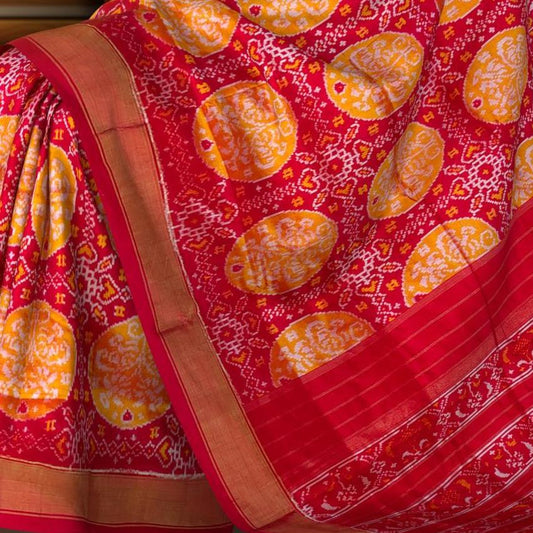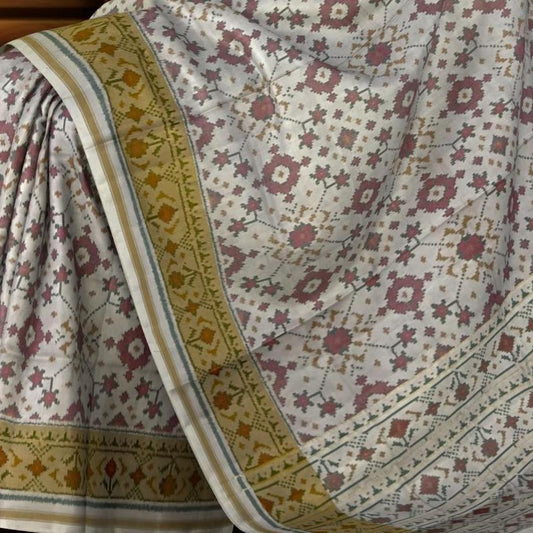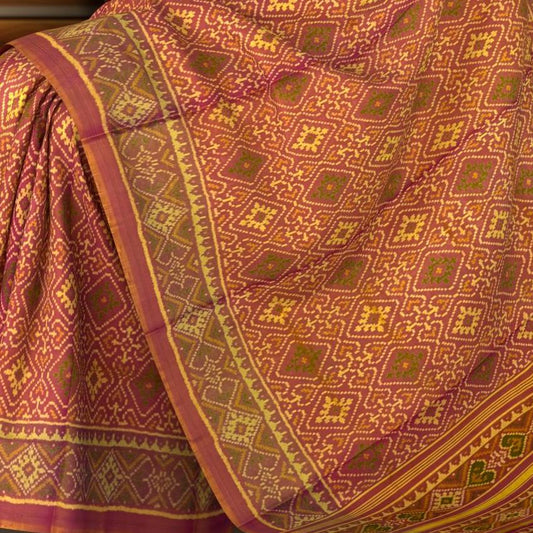Future of Patola Weaving: Sustaining Tradition Amid Modern Technology
The art of Patola weaving, with its intricate designs and vibrant colors, has long been a symbol of India's rich cultural heritage. This traditional craft, which dates back centuries, is renowned for its double ikat technique, producing exquisite sarees that are highly prized. However, like many traditional crafts, Patola weaving faces significant challenges in the modern era. This blog explores perspectives on sustaining this ancient craft, the impact of modern technology, and the vision for the future of Patola sarees.
Perspectives on Sustaining the Craft
Patola weaving, primarily practiced in Patan and Rajkot in Gujarat, is a labor-intensive process that requires exceptional skill and patience. Each saree can take several months to complete, involving meticulous hand-dyeing and weaving techniques passed down through generations. Despite the craft's historical and cultural significance, sustaining it in today's fast-paced world poses several challenges.
-
Generational Transition: One of the most pressing issues is the generational shift. Younger generations, often attracted to more lucrative and less labor-intensive careers, are reluctant to take up the craft. This reluctance threatens the continuity of Patola weaving traditions. To address this, it is crucial to create awareness and appreciation for the craft among young people. Initiatives like workshops, exhibitions, and collaborations with educational institutions can help inspire a new generation of weavers.
-
Economic Viability: The economic aspect is another significant concern. Patola sarees are expensive, primarily due to the time and effort required to produce them. This limits their market to a niche audience, making it challenging for weavers to sustain their livelihoods. Government support, grants, and subsidies, along with efforts to broaden the market through international exposure, can help make the craft more economically viable.
-
Preservation of Techniques: Documenting and preserving the traditional techniques is vital. Efforts should be made to create detailed records of the processes involved in Patola weaving. This includes video tutorials, written manuals, and digital archives that can serve as references for future generations. Organizations dedicated to cultural preservation can play a crucial role in this endeavor.
Impact of Modern Technology on Traditional Weaving
Modern technology, often seen as a threat to traditional crafts, can also offer opportunities for innovation and sustainability. The impact of technology on Patola weaving has been multifaceted.
-
Automation and Efficiency: While the essence of Patola weaving lies in its handmade quality, certain aspects of the process can benefit from technological advancements. For instance, automated looms can assist in some stages of weaving, helping to reduce the time required without compromising the craft's authenticity. However, it is essential to strike a balance to ensure that the unique characteristics of handwoven Patola sarees are preserved.
-
Digital Marketing and E-commerce: The advent of digital platforms has revolutionized how traditional crafts reach their audience. E-commerce websites and social media platforms provide a global marketplace for Patola sarees. Weavers and artisans can now showcase their work to a broader audience, increasing their sales and visibility. Digital marketing strategies, such as storytelling, influencer collaborations, and targeted advertising, can further enhance the appeal of Patola sarees to modern consumers.
-
Design Innovation: Technology can also aid in design innovation. Computer-aided design (CAD) software allows for the creation of new patterns and motifs, blending traditional aesthetics with contemporary trends. This fusion can attract a younger demographic while maintaining the craft's traditional roots. Collaborations between designers and weavers can lead to exciting new collections that respect tradition while embracing modernity.
Vision for the Future of Patola Sarees
The future of Patola sarees lies in a harmonious blend of tradition and innovation. By embracing modern technology and adapting to changing market dynamics, Patola weaving can thrive while preserving its cultural essence.
-
Sustainable Practices: Emphasizing sustainable practices is crucial for the future. Using natural dyes, eco-friendly materials, and ethical production methods can appeal to environmentally conscious consumers. Sustainability can also extend to the preservation of the craft itself, ensuring that it continues to thrive for generations to come.
-
Educational Initiatives: Education plays a vital role in securing the future of Patola weaving. Incorporating traditional crafts into school curriculums, offering specialized courses, and providing training programs for aspiring weavers can create a strong foundation for the craft's continuation. Educational institutions can partner with local artisans to offer hands-on experiences, fostering a deeper appreciation and understanding of Patola weaving.
-
Global Collaborations: Collaborating with international designers, brands, and cultural organizations can elevate Patola weaving to a global stage. Such collaborations can introduce new design perspectives, increase market reach, and create opportunities for cross-cultural exchange. Showcasing Patola sarees at international fashion events and exhibitions can also generate interest and appreciation among diverse audiences.
-
Cultural Tourism: Promoting cultural tourism can provide a sustainable source of income for Patola weavers. Organizing tours, workshops, and interactive experiences where visitors can learn about the weaving process and even try their hand at it can create a deeper connection to the craft. Cultural tourism not only supports the weavers economically but also raises awareness about the importance of preserving traditional crafts.
-
Government and NGO Support: Government policies and non-governmental organizations (NGOs) can play a pivotal role in supporting Patola weaving. Financial assistance, grants, and subsidies can help sustain the craft economically. NGOs can provide training, resources, and platforms for weavers to showcase their work. Advocacy for policies that protect and promote traditional crafts is essential for their long-term sustainability.
Conclusion
The future of Patola weaving hinges on the collective efforts of artisans, designers, policymakers, and consumers. By valuing and supporting this exquisite craft, we can ensure its preservation and evolution in the modern world. Embracing technology, promoting sustainability, and fostering education and collaboration are key to sustaining the legacy of Patola sarees. As we move forward, let us celebrate the artistry and heritage of Patola weaving, keeping its vibrant colors and intricate patterns alive for generations to come.







Leave a comment
Please note, comments need to be approved before they are published.